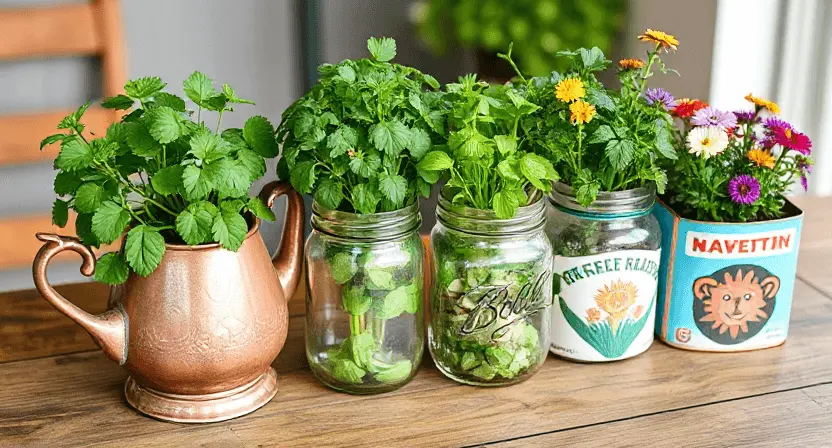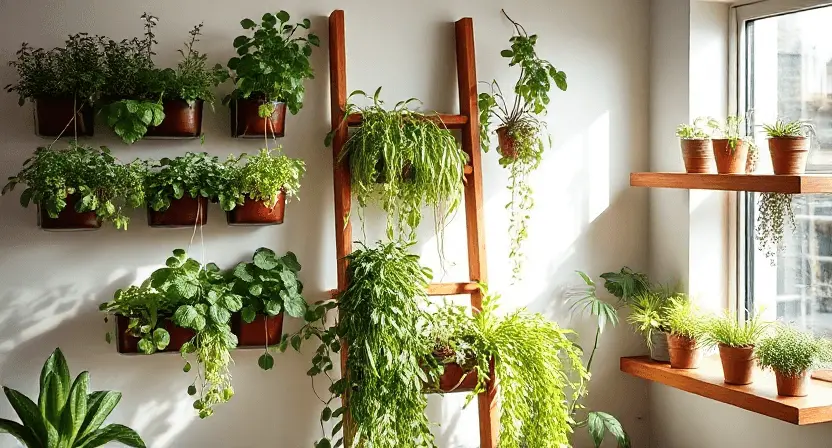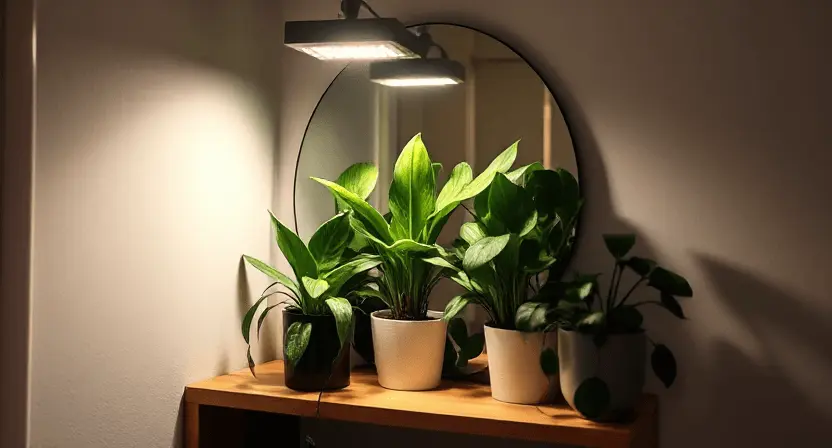Living in an apartment without a balcony might seem like a death sentence for your gardening dreams. I know because I’ve been there. Years ago, I moved into a tiny one-bedroom apartment with no outdoor space, not even a fire escape to sneak a potted plant onto. As someone who grew up watching my grandmother grow everything from tomatoes to marigolds in her backyard, I felt a bit lost without a garden of my own. But guess what? I found a way—and so can you.
Here’s everything I’ve learned about turning a small, indoor space into a thriving garden. Let’s get those hands dirty (well, metaphorically)!
Why Start Gardening Indoors? (My Honest Take)
First off, let me tell you why indoor gardening is worth the effort. When I started, I wasn’t just looking for something pretty to decorate my space with. I needed something to help me unwind after long days at work, something to connect me to nature even in the middle of the city.
Here are some real benefits I’ve experienced:
- Cleaner Air: Within a few weeks of adding plants like peace lilies and pothos, I could feel a difference in my apartment’s air quality. Plus, it’s science—plants like these help filter out toxins.
- Stress Relief: Tending to my plants became my go-to way to relax. There’s something incredibly calming about watering a plant or wiping dust off its leaves.
- Fresh Herbs: Nothing beats snipping some fresh basil or parsley right off the plant while cooking. It’s convenient and makes me feel like a pro chef.
- Decor Goals: Plants just make a space look alive. They add that cozy, lived-in vibe that no piece of furniture can.
How to Start Your Apartment Garden (Step-by-Step)
Step 1: Choose Your Plants Wisely
When I first started, I made the mistake of trying to grow cherry tomatoes in my low-light living room. Let’s just say it didn’t end well. The lesson? Not every plant will thrive indoors, so start with ones that can handle your conditions.
Here are some plants I’ve had great success with:
Herbs:
- Basil and Mint: These are practically foolproof and grow quickly.
- Parsley and Chives: Perfect for adding fresh flavor to meals.
- Thyme: It’s hardy and doesn’t take up much space.
Vegetables:
- Microgreens: Kale, spinach, or radish microgreens grow fast and don’t need much light.
- Lettuce: You can grow them in shallow trays and harvest in weeks.
Houseplants:
- Snake Plant: Nearly impossible to kill.
- Spider Plant: Great for beginners and has a fun, retro vibe.
- ZZ Plant: Can survive with very little light.
Step 2: Find the Best Spot for Light
One thing I learned early on is that light is everything. If you don’t have a lot of natural light, don’t worry—there are ways around it.
- Natural Light: If you’ve got a sunny window, use it. South-facing windows are ideal, but east- and west-facing ones can work too. My kitchen windowsill became my mini garden space.
- Grow Lights: When I realized my basil wasn’t getting enough light, I invested in an LED grow light. It was a game-changer. They’re affordable and easy to set up.
Step 3: Make Use of Vertical Space
In a small apartment, every inch counts. I started hanging plants from wall hooks and using shelves to create tiers of greenery. Here are some tips:
- Use macramé hangers for trailing plants like pothos.
- Install floating shelves to hold small pots.
- Try a ladder shelf to create a plant corner that’s both functional and stylish.
Step 4: Pick the Right Containers
I can’t stress this enough: your pots matter. I learned the hard way that plants don’t like sitting in waterlogged soil.
- Use pots with drainage holes to prevent root rot.
- Self-watering planters are a lifesaver if you tend to forget about watering.
- Get creative—I’ve used everything from old coffee mugs to mason jars as pots (just be sure to add pebbles for drainage).
Step 5: Master the Art of Watering
Overwatering was my biggest mistake when I started. I thought I was helping my plants by giving them extra water, but I was actually drowning them. Here’s what I do now:
- Stick your finger about an inch into the soil. If it feels dry, it’s time to water.
- Use a tray under the pots to catch excess water.
- Water in the morning so the soil has time to dry during the day.
Container Gardening: Ideas for Pots, Planters, and Upcycling Household Items

Container gardening is one of the easiest ways to start growing plants indoors. When I first started, I didn’t have fancy pots, so I got creative with what I had around the house. Here are some ideas:
- Upcycled Items: Use old coffee tins, mason jars, or even shoe boxes lined with plastic as planters. I once used an old teapot to grow mint—it looked adorable and worked like a charm.
- Self-Watering Pots: These are perfect for herbs and small plants. They keep the soil consistently moist without the risk of overwatering.
- Hanging Planters: If you’re short on space, try hanging planters near windows. They’re great for trailing plants like ivy or pothos.

Vertical Gardening: Solutions for Small Spaces
If you don’t have much horizontal space, go vertical! Vertical gardening not only saves space but also creates a stunning green display. Here’s what worked for me:
- Wall-Mounted Gardens: I bought a few wall-mounted planters online and used them to grow herbs in my kitchen. They’re functional and look amazing.
- Hanging Planters: You can hang plants from curtain rods or ceiling hooks. I’ve used macramé hangers for a boho vibe.
- Ladder Shelves: These are great for displaying multiple plants without taking up much floor space. I’ve got one in my living room packed with everything from succulents to ferns.

Lighting Solutions: Tips for Low-Light Apartments
Lighting was one of my biggest challenges, especially in winter when natural sunlight is scarce. Here’s how I made it work:
- Grow Lights: These mimic sunlight and are perfect for plants that need more light than your apartment can provide. I use an affordable LED grow light that clips onto shelves.
- Mirrors: Placing mirrors behind plants helps reflect light and brighten up the space. It’s a neat trick I picked up from a friend.
- Low-Light Plants: If grow lights aren’t an option, stick to plants like pothos, snake plants, and ZZ plants. They thrive in darker conditions.
My Favorite Indoor Gardening Hacks
Here are some tricks I’ve picked up over the years:
Hack #1: Boost Humidity
My plants were struggling in the winter until I figured this out. Apartments can get really dry, especially when the heater is running. Here’s what helped:
- Grouping plants together to create a mini humid zone.
- Placing a bowl of water near the plants.
- Misting the leaves once a day (it’s oddly therapeutic).
Hack #2: DIY Fertilizer
I save my eggshells and banana peels to make natural fertilizer. Just crush them up and sprinkle them on the soil—it’s an easy way to give plants a nutrient boost.
Hack #3: Pest Patrol
Even indoor plants can get pests. I once had a spider mite infestation that nearly wiped out my collection. Now, I check my plants weekly and use neem oil if I spot anything suspicious.
Real-Life Indoor Gardening Ideas
A Kitchen Herb Garden
One of my proudest projects was creating a little herb garden on my kitchen windowsill. I used small terra-cotta pots for basil, parsley, and cilantro. Not only did it look adorable, but it also made cooking so much more fun.
A DIY Terrarium
I once made a terrarium in an old fish tank. It’s a mix of moss, small ferns, and tiny succulents, and it’s been thriving for years. Plus, it’s a great conversation starter when guests come over.
A Living Wall
If you’re feeling ambitious, try a vertical garden. I mounted small planters on a wooden pallet and turned it into a living wall for my bedroom. It’s a bit of work, but the results are stunning.
Overcoming Common Challenges
Problem: Not Enough Light
Solution: Mirrors can help reflect light into darker areas. And if all else fails, grow lights are your best friend.
Problem: Space Constraints
Solution: Use stackable planters or wall-mounted pots. Even a narrow windowsill can hold a row of small herb pots.
Problem: Forgetting to Water
Solution: Set a reminder on your phone or use self-watering pots. Trust me, they’ll save your plants (and your sanity).
Why Gardening Indoors is Worth the Effort
Looking back, starting an indoor garden was one of the best decisions I’ve made. It’s not just about having something pretty to look at. It’s about creating a little slice of nature in a concrete jungle, about finding joy in nurturing something and watching it grow.
Final Thoughts
Gardening in an apartment without a balcony might sound like a challenge, but it’s totally doable—and so rewarding. Whether you’re growing herbs for your kitchen, adding greenery to your living room, or experimenting with microgreens, the possibilities are endless.
So, what are you waiting for? Start small, get creative, and let your indoor garden bloom. And hey, if you’ve got any indoor gardening tips or success stories, share them in the comments. I’d love to hear what’s working for you!
